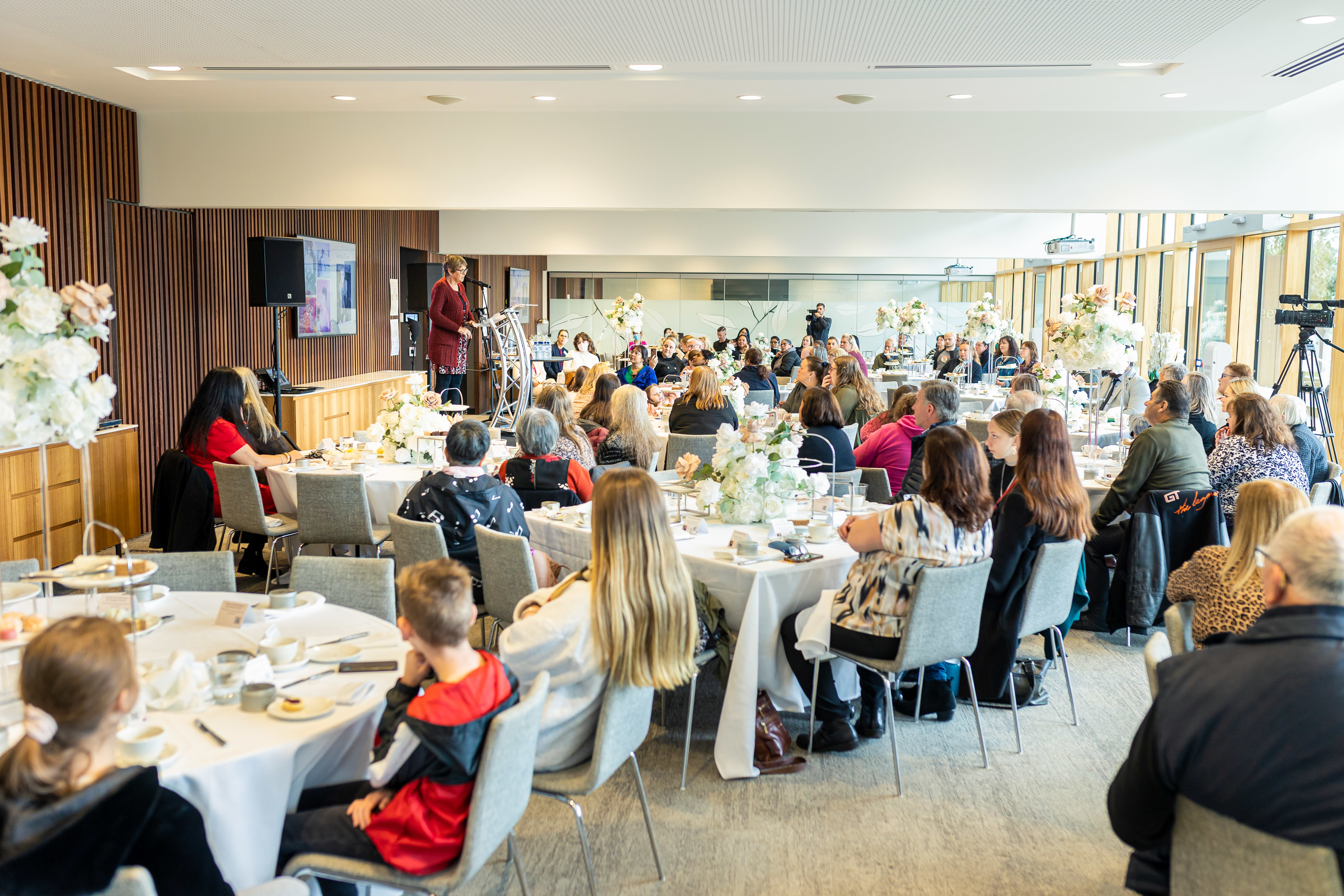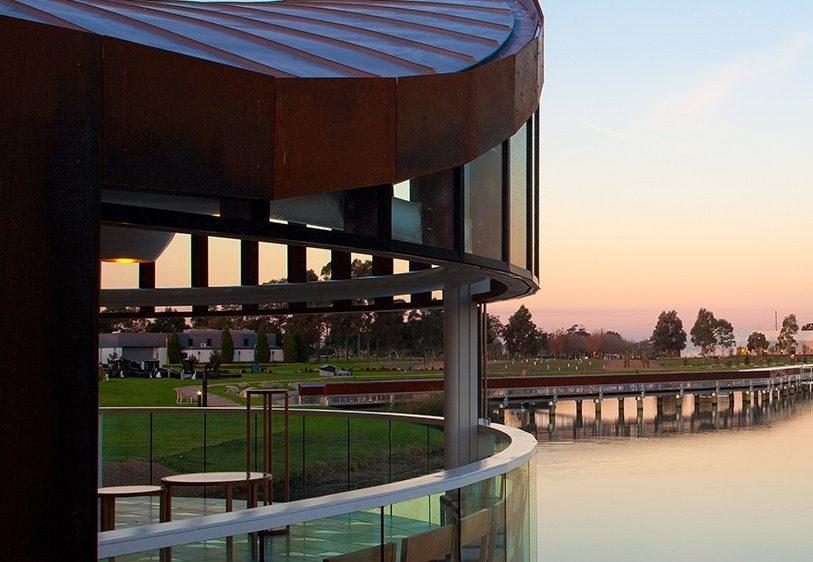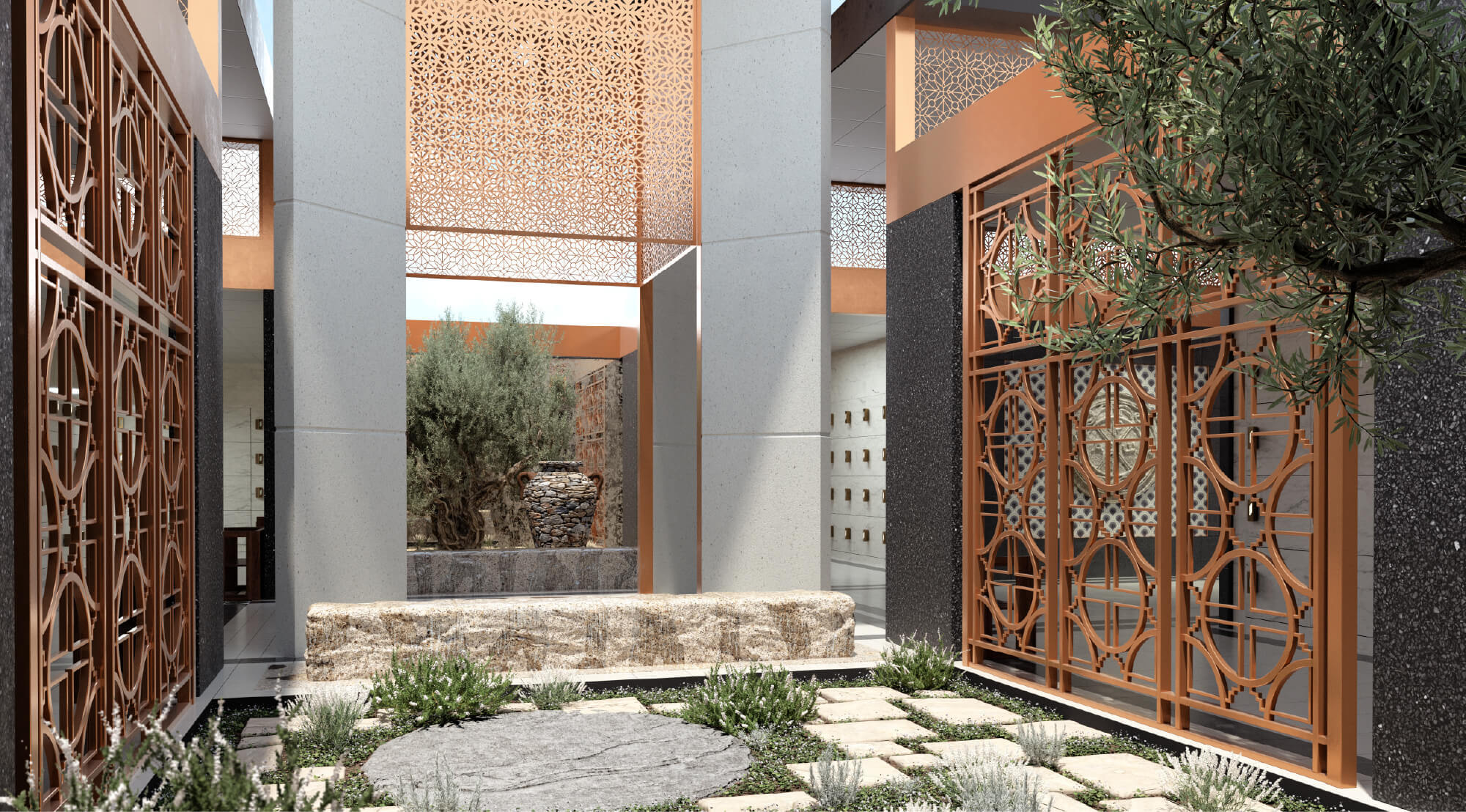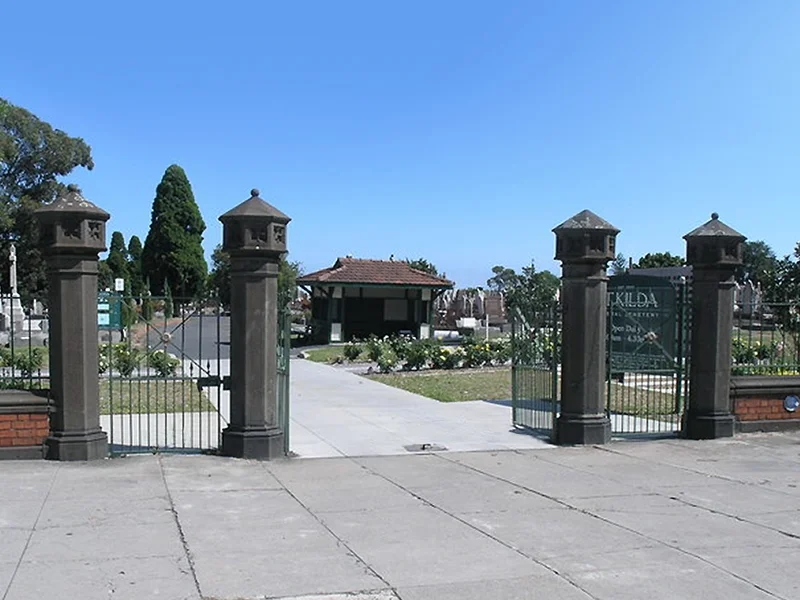Leaving a mark with art

Cemeteries are full of historical artworks with superb examples of craftsmanship, architectural and artistic styles, and botanical and landscape qualities. Dr Celestina Sagazio, Historian and Manager of Cultural Heritage at Southern Metropolitan Cemeteries Trust, takes some time to explain the significance of art in cemeteries and describe two fine examples you can explore at Melbourne General Cemetery.
Cemeteries effectively reflect our values, customs, emotions and aspirations as individuals and as a society. This is why cemeteries can be appreciated as outdoor art galleries and museums replete with marble, granite, slate, iron and wooden creations. It’s not uncommon to see students of art and architecture among the monuments, where they find a huge number of stone sculptures such as angels, religious figures, and symbols such as draped urns, columns and obelisks. Such devices on monuments have long been created to commemorate our lives and leave our mark in the world in a creative and beautiful way.
Outstanding examples of art are found in cemeteries such as the iconic Melbourne General Cemetery. One such example is the substantial sculpture ‘Guardian Angel’, depicting Saint Michael the Archangel with his protective sword, on the grave of notable property owner Michael Dawson.
It is prominently located near the historic bluestone Catholic mortuary chapel, and the cemetery’s fourth mausoleum, appropriately named Saint Michael the Archangel Mausoleum. It is one of the largest Saint Michael the Archangel sculptures in any cemetery in the world, making it easy to spot near its roadside position.
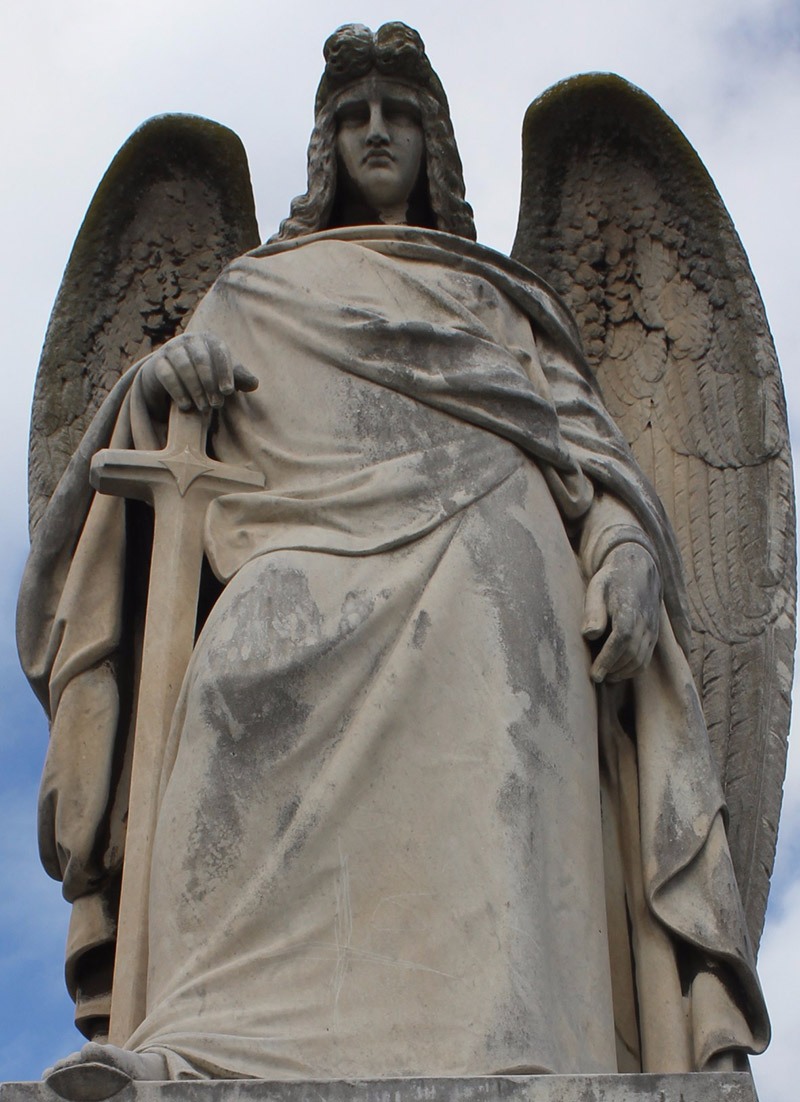
It is not surprising to learn that this big sculpture has a big story attached to it. A fine sculptor of the period, Charles Summers, created ‘Guardian Angel’. The English-born Summers was the most accomplished sculptor in Victoria by the 1860s. After a brilliant career in the Royal Academy schools, he migrated to Melbourne in 1852 for health reasons.
He worked on sculptural decoration in the new parliamentary chambers, and his masterpiece was the Burke and Wills statue installed in the city. In 1867, he left Melbourne in search of other commissions and established a successful studio in Rome. The pedestal of the ‘Guardian Angel’ sculpture bears the words ‘C. Summers Roma 1879’, revealing that it was produced in Rome in 1879.
According to Jennie Maggs, a direct descendant of Summers, the sculpture was one of his final works. Summers died in 1878 before the sculpture was installed. It was his son Charles Francis Summers, also a sculptor, who brought the large piece to Melbourne and erected it in the cemetery for the Dawson family in 1880.
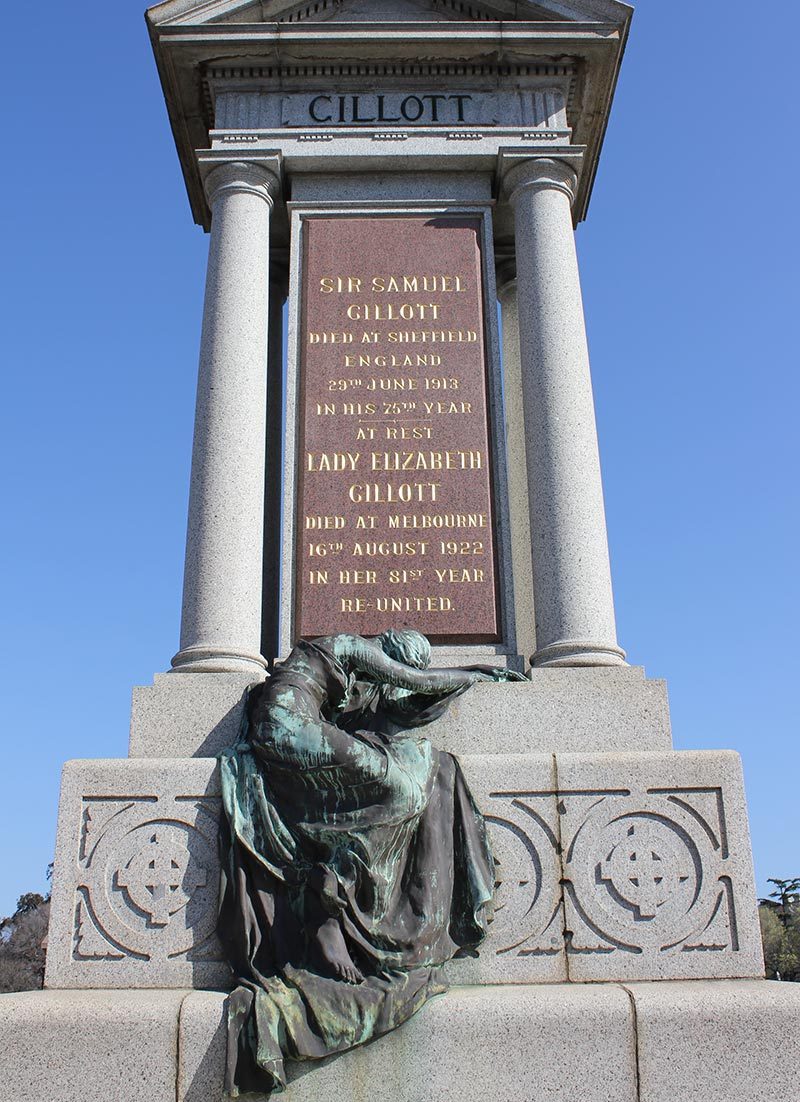
Another fine sculpture in Melbourne General Cemetery is the metal weeping woman symbol, known as ‘Grief’, on the substantial grave of Sir Samuel Gillott. Gillott was a controversial lawyer and politician of the times, and Lord Mayor of Melbourne. He died in Sheffield, England after falling down the stairs at night and his body was returned to Melbourne for burial in the cemetery. ‘Grief’ was created by the renowned sculptor Charles Web Gilbert. The weeping woman was a common symbol in early cemeteries and was created in many different forms around the world.
Any visit to the cemetery by art lovers should include an inspection of these two striking artworks, amongst others.
Inspired by the sound of art in cemeteries? Why not visit one of our eight cemeteries and memorial parks to discover more? From the historic Melbourne General, Brighton General, St Kilda, Cheltenham Pioneer and Springvale Botanical cemeteries to the more modern Bunurong and Cheltenham Memorial Parks, there’s lots to inspire your creative spirit. Grab a map and go on a day tour with a difference, or join a group on one of our regularly scheduled tour programs.
This article first appeared in the Mornington Peninsula News Group series on 3rd October, 2017.
